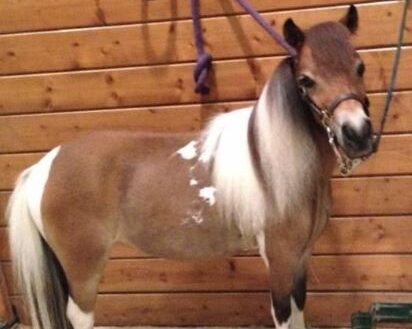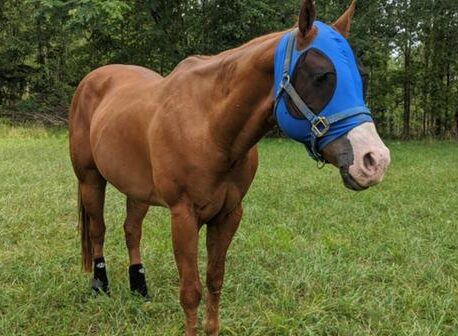
Horse Feed for Metabolic Horses
What is the best feed for horses with metabolic conditions? Find out what ingredients set Nutrena® horse feed apart from other horse feed brands on the market and why we provide the best support for your horses with common metabolic conditions like HYPP, PSSM, EMS, PPID/Cushings, Laminitis or Insulin Resistance.
FAQs About Feeding Horses with Metabolic Conditions
If you’re a horse owner trying to support metabolic conditions like HYPP, PSSM, EMS, PPID/Cushings, Laminitis or Insulin Resistance, it’s important to read these frequently asked questions about ingredients, diet requirements, and what is guaranteed on your feeding tag. In order to choose the best feed for horses with metabolic conditions, you have to know what factors go into their diet and how to compare different products on the market.
-
What is the best feed for horses with Equine Metabolic Syndrome (EMS) and Insulin Resistance (IR)?
EMS is a hormonal disorder in horses, similar to metabolic syndrome in humans, that is characterized by obesity, insulin resistance, and abnormal fat deposits, which can predispose affected horses to chronic laminitis.
To help prevent your horse from developing EMS, it is important to maintain an optimum body condition score and prevent obesity through a balanced diet and regular exercise. For horses who already are dealing with EMS, these tips can help successfully manage their condition.
Dietary and Management Recommendations
- Utilize low calorie, controlled starch and sugar rations that help minimize the effects of the blood glucose response to meals can assist in managing the disorders.
- Strong recommendation to use forages with a low nonstructural carbohydrate content.
- Other specific nutrients, such as magnesium, vitamin E, zinc and chromium, are useful in managing the above mentioned disorders.
Recommended Products
- Nutrena® Empower® Topline Balance®
- Nutrena® SafeChoice® Special Care
-
What is the best feed for horses with Hyperkalemic Periodic Paralysis (HYPP)?
The main dietary goal in managing an HYPP (Hyperkalemic Periodic Paralysis) horse is keeping total dietary potassium under 1.0%. It is key to look at the total dietary potassium instead of just the hay or just the grain source, but how much of each is being fed.
Dietary and Management Recommendations
- A horse suspected of being N/H or H/H should be on a low potassium diet (less than 1% in total diet). A DNA test should be used to confirm the status so that appropriate treatment can be administered.
- The horse should be turned out as much as possible and/or placed on a regular exercise program. Feed oat or grass hay but NOT orchard grass hay, which is high in potassium. It is a good idea to have forage tested for actual potassium content.
- Do not feed electrolytes containing potassium.
- Do not use high levels of cane, molasses or bran mashes as these may contain high levels of potassium.
- For mild episodes:
- Exercise the horse, either by walking or lunging. Exercise stimulates adrenaline, which helps replace potassium inside the cells. However, use caution, as the horse could stumble and fall while sustaining muscle tremors.
- Supplement diet with grain (oats, dry corn-oats- barley or light corn syrup) as a source of glucose. Glucose stimulates the release of insulin and promotes potassium uptake by cells.
- For severe attacks, immediate veterinary attention is necessary.
Recommended Products
- Nutrena® SafeChoice® Senior Molasses Free
- Nutrena® SafeChoice® All Life Stages
-
What is the best feed for horses with Polysaccharide Storage Myopathy (PSSM)?
PSSM is a muscle disease and one form of tying up. When tying up becomes chronic, it is termed RER or recurrent exertional rhabdomyolysis. Polysaccharide Storage Myopathy (type 1 PSSM) is caused by a genetic mutation that results in excessive glycogen storage in skeletal muscle. A second form of PSSM, not caused by the mutation, has been coined type 2 PSSM. It is proposed that affected horses have an abnormality of glycogen synthesis regulation that leads to storage of unmetabolized carbohydrate in the muscles.
Dietary and Management Recommendations
- On a total diet basis (hay and feed), provide less than 15% of the daily digestible energy intake as dietary starch and at least 15% of the daily digestible energy intake from fat sources.
- In practical terms, the majority of the diet should consist of high quality forages such as alfalfa hay or grass-alfalfa mix, with a total NSC (WSC+Starch) lower than 12%.
- Affected horses should have minimum contact with lush pasture grass as high levels of fructans (plant sugars) can exacerbate the problem.
- Select a feed with high quality protein content, containing high quality amino acids.
- The majority of horses with PSSM1 are easy keepers, and should be fed a low NSC forage; 30% protein diet balancer (to
manufacturer’s recommendations) with high quality amino acids; and 1-2 pounds of fat supplement per day. - If additional calories are warranted, they should be provided in the form of fat.
- Ensure the total diet includes 2000 IU/day of vitamin E. Additional supplementation may be needed for specific individual horses, based on serum vitamin E level.
- Access to salt and fresh water at all times.
- Minimize stress and provide regular routine with exercise, turnout
and feeding. - PSSM1 horses respond most favorably to both diet and exercise change. Typically, after 3-6 months of therapy, post-exercise serum concentrations of CK are within reference limits.
Recommended Products
Low Activity:
- Nutrena® Empower® Topline Balance®,
- Nutrena® Empower® Boost
Horses in Exercise:
- Nutrena® SafeChoice® Special Care
- Nutrena® SafeChoice® All Life Stages
- Nutrena® ProForce® Fuel
-
What is the best feed for horses with PPID/Cushings?
As a starting management practice, your veterinarian may recommend pergolide as an added medication for your horse. This is available from a number of pharmaceutical sources by prescription. When it comes to feeding them, though, here are a few tips.
Dietary and Management Recommendations
- Consider joint support such as chondroitin sulfate + glucosamine products that are available in supplement form.
- Opt for low NSC forage.PPID/ Cushings horses require a hay or pasture source that is low in non-structural carbohydrates (NSC), so you might want to have your forage tested.
- Choose senior feeds that are fortified with lysine, methionine, biotin, vitamin E and organic trace minerals (copper, zinc, manganese and selenium) to help maintain muscle mass, support hoof growth and support immune response.
- Address weight management if your horse is not maintaining weight. You may need to increase the feeding rate of the senior feed or add a low starch, rice bran based high fat supplement.
Recommended Products
- Nutrena® Empower® Topline Balance®
- Nutrena® SafeChoice® Special Care
-
What is the best feed for horses with Laminitis?
The term laminitis means inflammation of the laminae. There are multiple causes. Overloading the hindgut with rapidly fermentable carbohydrates such as starch and fructans is the number one cause of laminitis. Hydrolyzable carbohydrates that reach the hindgut are fermented, causing an increase in lactic acid production. Acidosis causes the death of many beneficial bacteria, releasing endotoxins, which, in turn, reduces blood flow to peripheral tissues. Soft tissue in the hoof capsule is highly susceptible to damage due to decreased blood flow.
Dietary and Management Recommendations
- Horses prone to laminitis or suffering from the disease should be fed diets low in hydrolyzable carbohydrates (starch).
- Horses with laminitis should be fed rations well-fortified in vitamins/minerals and amino acids to help with repair of the hoof wall and structures.
- Horses that have suffered from laminitis should not be fed diets rich in starch, as sensitivity to increases in blood sugar and insulin may be present in these horses.
- Some horses may benefit from supplemental magnesium and chromium, both of which assist in increasing sensitivity to insulin.
- If lush pasture is available, horses with laminitis or prone to laminitis should be fitted with a grazing muzzle to prevent excess consumption of forage that contains high levels of fructans (plant sugars). If a muzzle is not an option, placing the horse in a dry lot is preferable to lush pasture.
- Strict weight control and exercise help the laminitic horse immensely.
- Hoof trimming or appropriate shoeing is imperative, particularly in horses that have suffered rotation of the coffin bone.
- Horses with laminitis fare best when left turned out around the clock once the acute phase has passed.
Recommended Products
- Nutrena® Empower® Topline Balance®
- Nutrena® SafeChoice® Special Care
- Nutrena® SafeChoice® Senior Molasses Free
Save with our See the Difference Trial
Recommended Products
-
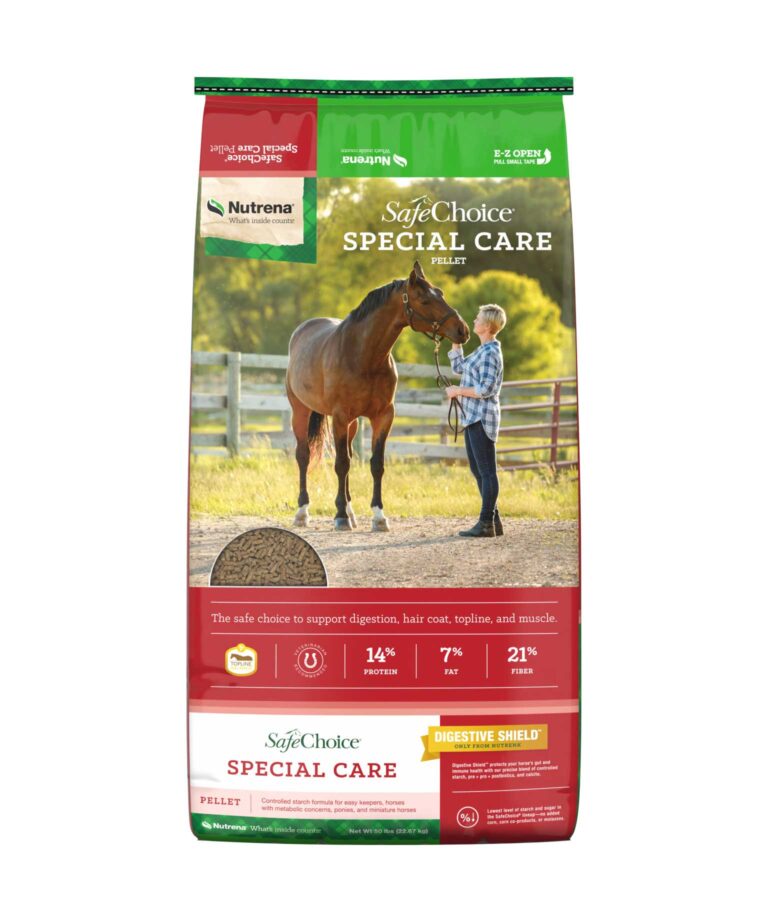 SafeChoice
SafeChoice
Special Care
14.0% Crude Protein21.0% Max Crude Fiber7.0% Crude FatLow controlled starch formula with only 10% NSC for horses with metabolic concerns and easy keepers – now with Digestive Shield™Learn More -
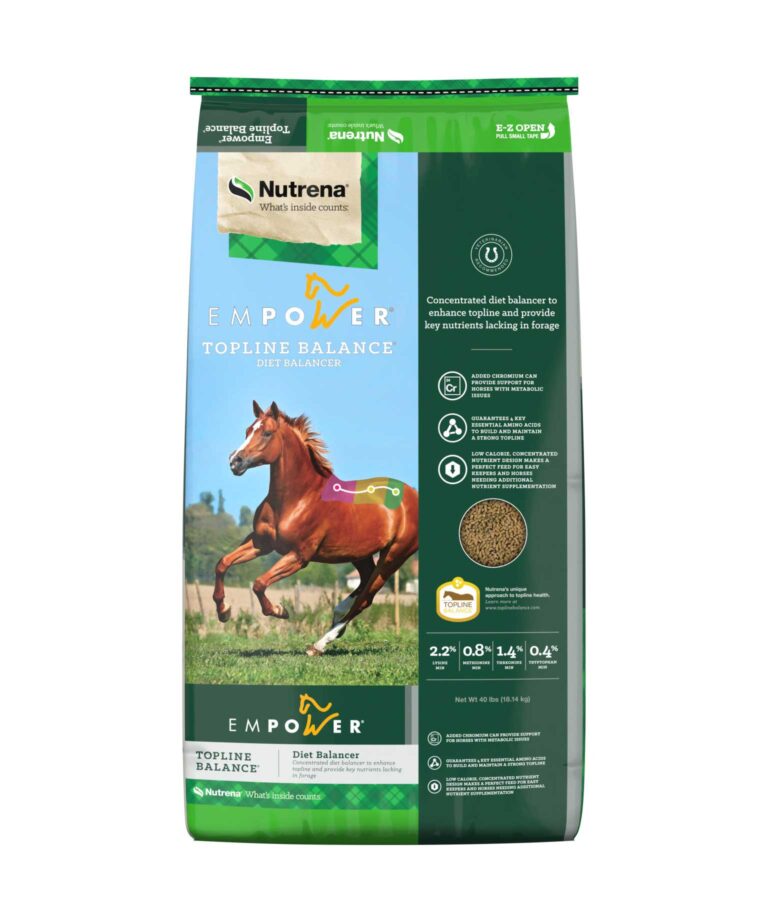 Empower
Empower
Topline Balance
30.0% Crude Protein8.0% Max Crude Fiber5.0% Crude FatConcentrated diet balancer to enhance topline and provide key nutrients lacking in forageLearn More -
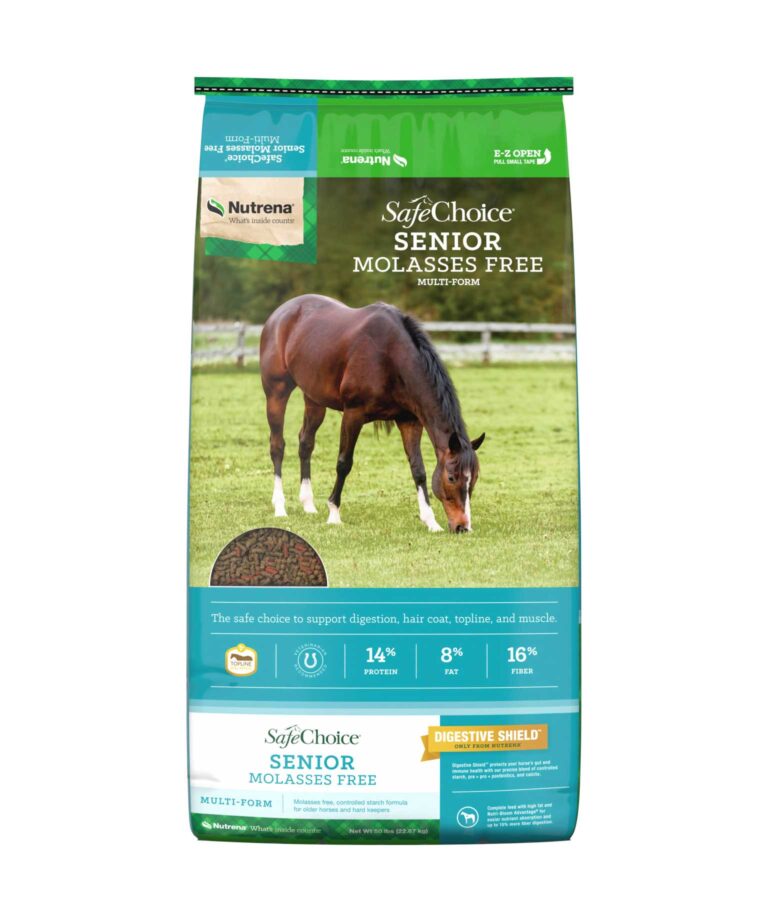 SafeChoice
SafeChoice
Senior Molasses Free
14.0% Crude Protein16.0% Max Crude Fiber8.0% Crude FatSpecially designed, molasses-free formula with high fat, controlled starch, and key ingredients for older horses – now with Digestive Shield™Learn More
Get a FREE Consultation
Fill out our Contact Us form for an equine nutrition expert to provide 1-on-1 recommendations for your feeding program.
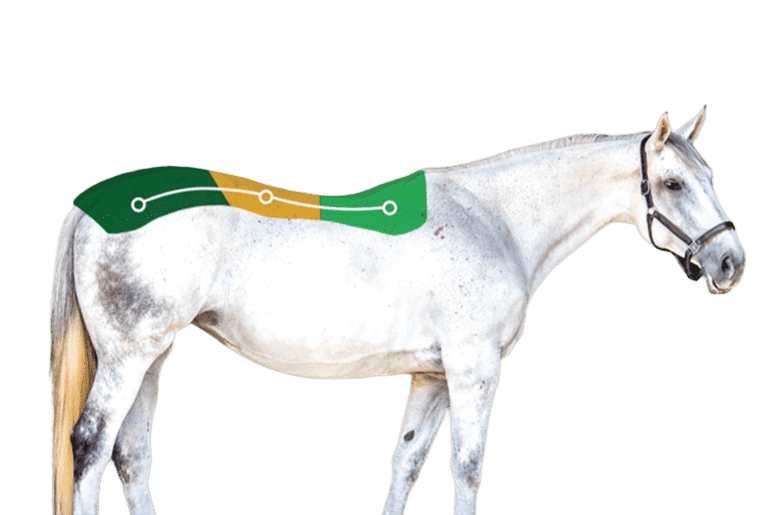
Topline Balance® Technology
Only from Nutrena
Nutrena’s Topline Balance includes a specific amino acid profile to help support healthy topline for proper muscling and core, which can help your metabolic horses get concentrated nutrients. The SafeChoice® family of feeds and our Empower® Topline Balance ration balancer all provide and guarantee three critical amino acids – Lysine, Methionine and Threonine – in levels and ratios designed to impact the topline and entire muscle structure of the horse.
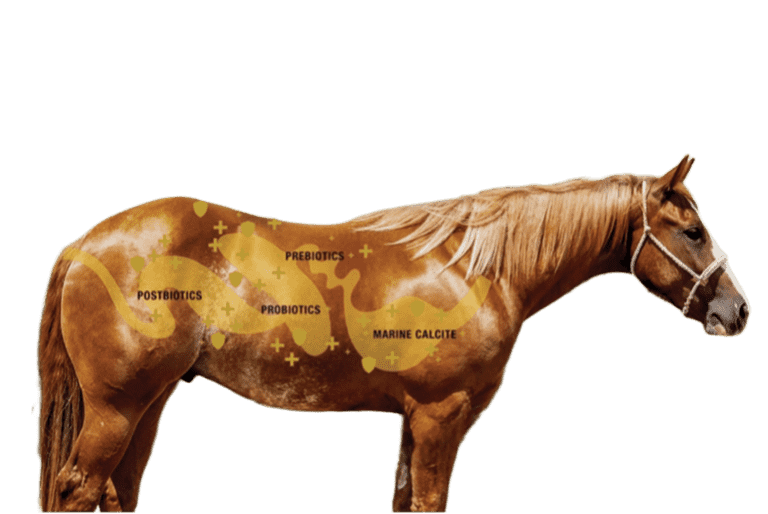
Digestive Shield™
Only from Nutrena
Digestive Shield is a new technology, exclusive to the Nutrena® brand, that supports gut health from end-to-end with a unique combination of controlled starch, calcite and pre + pro + postbiotics. Digestive Shield™ is one more way Nutrena® continues to work to promote the health and well-being of horses. Unlike some other horse feed, Nutrena SafeChoice guarantees pre + pro + postbiotics on our feed tags, so you can support your horse’s immune system and gut health, maintain microbiome and stomach pH, balance digestive system, digestive tract, overall health and performance.
Horse Blog
-
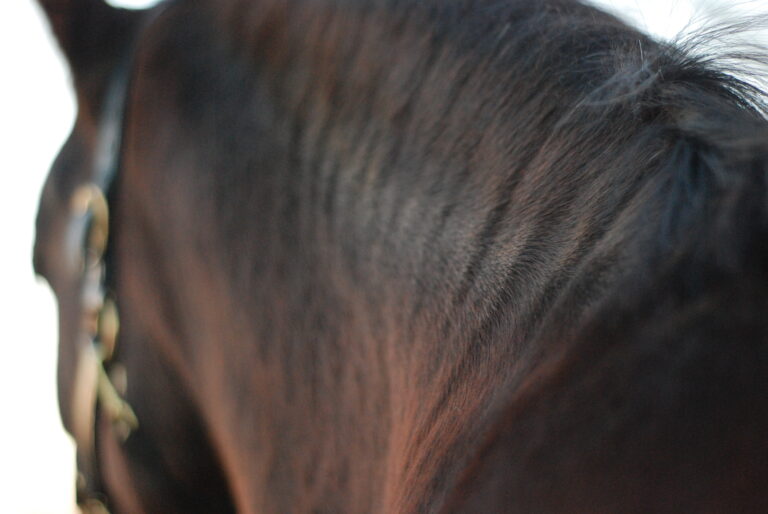
Managing Overweight Horses
Managing your horse’s weight is key to healthy joints and bones, hooves and can play into body physiology including hormone balance. Watch how to manage weight while still supplementing a healthy diet. It can be as easy as swapping grains and treats with a ration balancer like Empower Topline Balance.
View Blog -
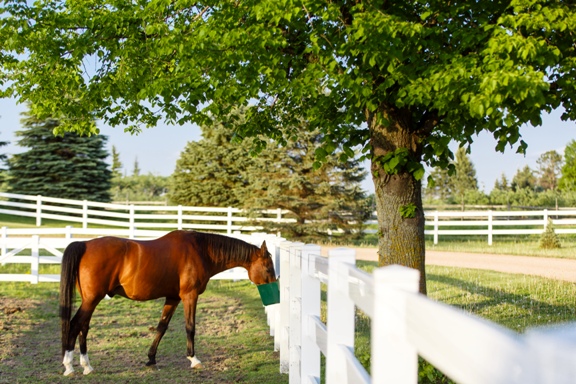
Amino Acids in Horse Feed
Horses of all ages require adequate amounts of protein for maintenance, growth, reproduction and work in addition to structural health. Learn about essential vs non-essential amino acids, limiting amino acids, and how horses use them.
View Blog -
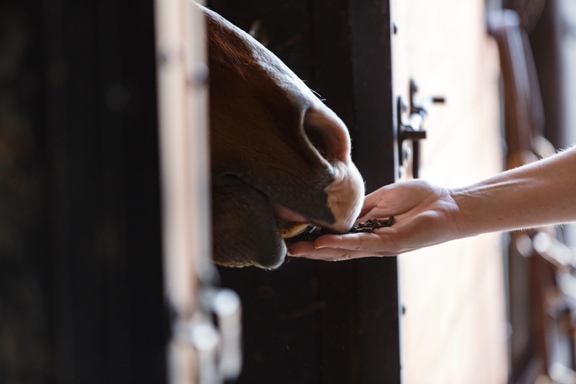
Iron Metabolism and Insulin Resistance in the Horse
There has been a great deal of confusion whether dietary iron levels can affect insulin resistance in horses. Read about iron metabolism and what we know about it regarding insulin resistance in the horse.
View Blog -
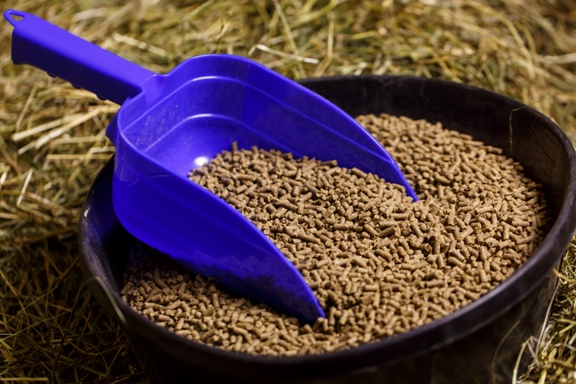
How To Calculate % Non-Structural Carbohydrates (NSC)
When considering low-starch or low-carb nutrition options, it is important for owners to calculate NSC in their horse’s dietary regimen. Here’s how to calculate % NSC on your feed tags.
View Blog
*Review collected as part of incentivized campaign

